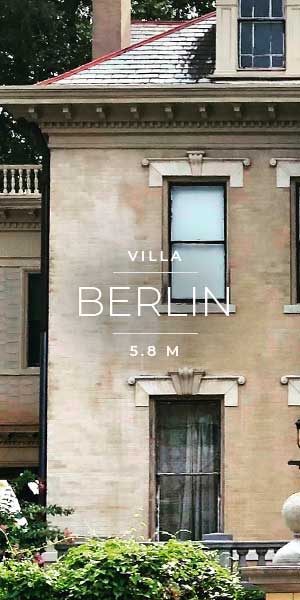Interior design as a sales element for a property
An essential selling element is the interior design. If you want to sell a house or an apartment for a better price, you should also take care of an appealing interior design. This can significantly enhance the price of the property. In the USA, this trend has already been recognized. From there also comes the term home staging. This term refers to the professional adaptation of premises to promote sales. Light, colour and furniture are used in a targeted manner to ensure the best possible visual appearance of the apartment or house. The design of the walls and the floors also fall into this area. This home staging can shorten selling times and increase prices by up to 15%. Home staging attempts to design the interior design in such a way that it appeals to as many potential buyers as possible. This begins with the decluttering of the house or apartment. The decluttering is done in all rooms from the basement to the attic. Afterwards also the furniture is removed. The prospective buyer should have the opportunity to furnish the apartment in the spirit itself. Personal belongings of the original owner of the apartment or house then serve at most as accessories.
Buying with your eyes
A property is primarily bought with the eyes. This means that the visual impression should represent the property’s best side. Only about 20% of all people have a pronounced spatial imagination. A completely cleared out apartment can therefore create problems for many. That is why only so-called focal points are redesigned in the cleared apartment or house. This can be either the winter garden or the fireplace in the living room. With light, scents and colors the senses of the prospective buyers are addressed purposefully. A color coordination of the walls and the floors contributes much to the optical tuning. Then the interior design is tackled again. The now almost empty apartment is equipped with suitable furniture in the most important places and decorated accordingly. Home staging highlights the possible uses of the space as well as the room sizes. This allows the prospective buyer to get a clear picture of the interior of the property. Most buyers decide for or against a property in the first few seconds. The first impression counts. Home staging, however, should not give false impressions. It also cannot eliminate construction defects or damage to or in the building. This method is only intended to shorten the buying process and to achieve the best possible price for the property.
The history of home staging
Home staging was invented by the American real estate agent Barbara Schwarz. Based on her many years of professional experience, she realized that it is easier to sell a property if it also appeals to the buyer’s emotions. Most properties for sale show the history of the house or apartment, but not the future. Buyers don’t really want to have anything to do with pieces of furniture that came from the original owner. He is primarily interested in whether he can feel comfortable in the new premises. Home staging has been considered a separate field of activity for interior architects and designers since the 1990s. In Germany, a separate professional association for home stagers has existed since 2010. Since the founding of the first home staging agency in Hamburg in 2006, there are now more than 200 service providers working in this field.
The importance of interior design
Interior design is of particular importance nowadays, as many buildings are not newly constructed, but rather converted and renovated. Here, interior design is challenged to find new spatial solutions. The design of rooms has not only an aesthetic, but also a psychological and social character. A living space is there to feel comfortable in. It is best if the new owner of the house or apartment can identify with the rooms. The interior design ensures a concrete realization of these well-being wishes. If you buy a house or a new apartment yourself, you will quickly find out whether the spatial layout suits you or whether you feel comfortable in the rooms. If these factors are already positive when buying a property, a prospective buyer is more likely to give a commitment to purchase.
In the architectural design of interiors, there are several elements that are used in the process. These include, for example:
- The lighting
- The color of the walls
- The nature of the soil
- The symmetry of the furnishings
- The accessories
Light
The lighting design of a room should first and foremost follow its interior design. The light colour can also determine the emotions. Cool light colours have a stimulating effect, while warm light colours have a calming effect. The colour is measured in Kelvin (K). Warm light has a colour temperature of up to 3,300 K and cold light a temperature of over 5,000 K. Light sources should not dazzle under any circumstances. The light sources must be installed in such a way that they do not directly irradiate the eye and are not reflected by any objects.
Color
The color design of the walls also plays a big role architecturally. For small rooms should use light colors. This also applies to the ceiling. In contrast, the floor should be designed rather darker. Wall lights that illuminate the upper part of the walls make the room appear higher. In the case of high rooms, which are mainly found in old buildings. Here, if the ceiling is painted in darker colors, the rooms will appear less tall. Light sources, on the other hand, should only be directed at the walls. This makes the room look wider. As a rule, dark colours make a long room appear shorter, while light colours increase the depth of the room.
The ground
Floor coverings are also diverse and are considered a design element. The floor is the element on which everything stands. Therefore, its design is also very important. For a living room or a bedroom, all types of hardwood floors are best suited. These are natural and also easy to maintain. Tile floors are mostly used in bathrooms, toilet or kitchen. However, they are colder than hardwood floors, but are sturdier and easy to clean off wet dirt. Laminate floors are also easy to clean and are suitable for the hallway or study. For a soft and cosy feeling when walking, carpets are ideal. They are ideal for living rooms and bedrooms. However, cleaning is a little more time-consuming. Carpet is susceptible to stains and can absorb odors over time. Linoleum flooring, meanwhile, is making a comeback. Unlike in its past, linoleum flooring no longer only impresses with its marbled brown tones, but now also imitates other materials, such as wood or marble. This floor is very robust and is suitable for almost all rooms. Only bathrooms are excluded, as linoleum is very sensitive to moisture. The trend towards natural living also calls for new materials. In the meantime, cork has become established as a floor covering. These floors are very elastic and have a warm effect. Cork is obtained from the bark of trees, which means that no clearing of forests is necessary. It is simply a renewable resource and therefore very environmentally friendly. Cork floors are also suitable for all rooms except the bathroom. Marble floors, on the other hand, are cold but luxurious. Marble floors mainly add value to any property. However, marble flooring is very cold and sensitive to acids such as vinegar, citric acid or red wine. The design of the ceiling is again a part of the interior design that can enhance your property. For high ceilings, it is advisable to use bold colors. Using dark bold colors will pull the ceiling down. The room will no longer appear as high. In fact, high rooms can give off a train station concourse feel. To avoid creating a hall atmosphere, comfortable and textile furniture can help. You can fill the empty space under a high ceiling with appropriate light fixtures. Low ceilings can make a room feel stifling. To counteract this, these ceilings should be painted with light colors. They will then make the room appear higher. With the right light sources, these rooms can also be made to appear taller.
Textiles
A room can also be visually embellished with textiles. Cushion covers can be replaced and curtains renewed as well. Everything that can be easily changed in a room counts as decoration. This primarily includes accessories, table decorations and small pieces of furniture. Basically, textiles added warmth and coziness to any room. If it is not possible to remove all the furniture when selling a house, because the house is still occupied by the owner in the meantime, at least all these things should be thoroughly cleaned or, ideally, replaced with new fabrics or details. Modern interior design deals with all of these detailed issues. It can be taken into account both when selling a house or apartment and as a result of a purchase. Interior design contributes significantly to the visual and aesthetic design of living spaces. Just in the today’s time the requirements of flat seekers or real estate prospective customers are higher than in the past. They attach great importance to cosiness and a pleasant living atmosphere.



